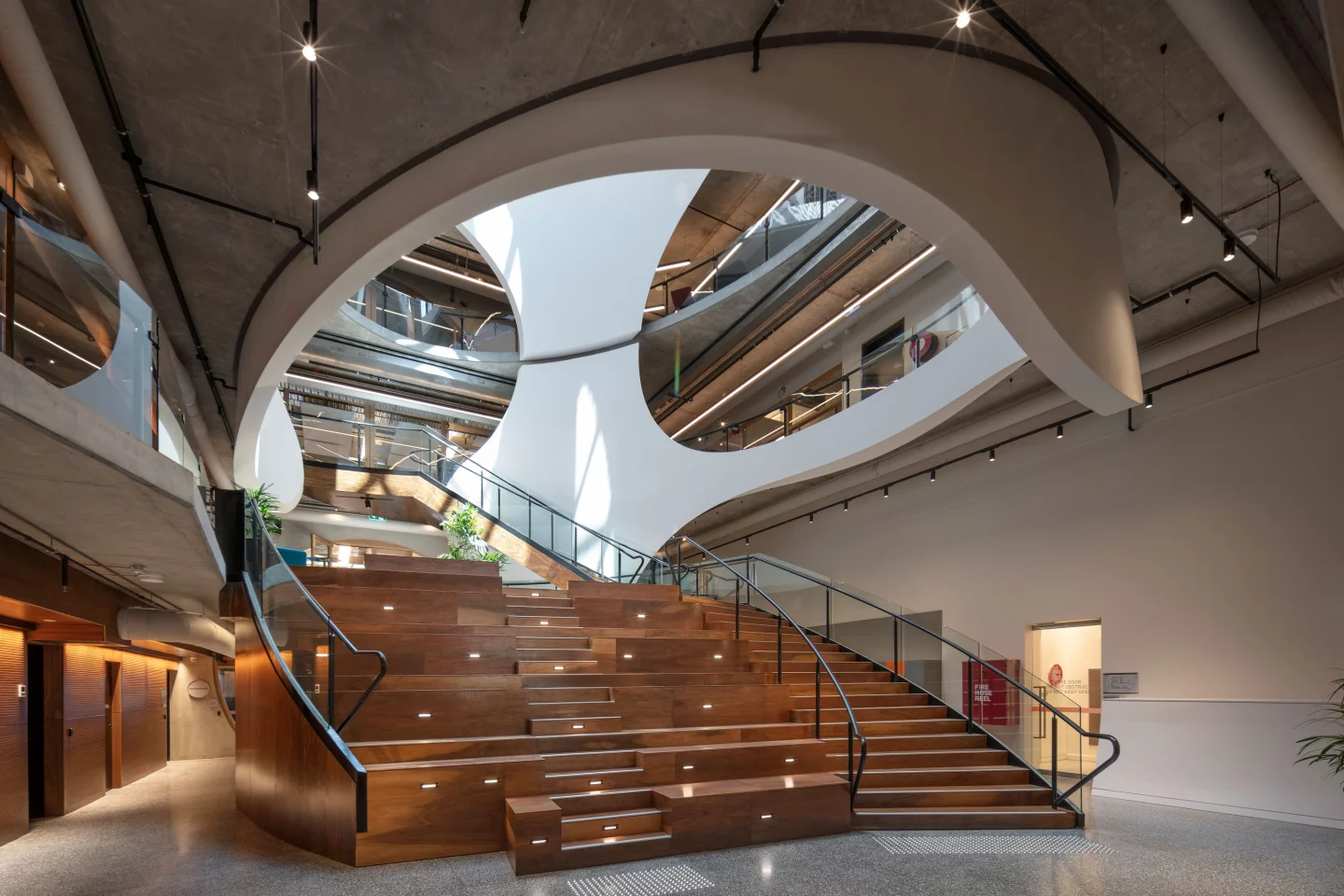Brearley Architects and Urbanists (BAU) and Grant Amon Architects (GAA) recently completed Australia's first purpose-built LGBTQI+ center. The building is envisioned as a series of interconnected tubes wrapped in a concrete exterior and also incorporates significant sustainability features, including solar power.
The Victorian Pride Centre (VPC) is located in St. Kilda, Melbourne. Its design is the result of an architecture competition that was launched following the Australian parliament passing a bill to legalize same-sex marriage in 2017 and subsequent available government funding. It measures 6,200 sq m (roughly 67,000 sq ft) and is arranged into an L-shape, with its stacked horizontal tube-like design creating multiple street-facing terrace areas.
"A series of conceptual tubes emerge as an abstract armature that maximize the urban envelope; provide relevant and significant architectural forms and spaces; and generates an overarching order," said BAU. "Most importantly, these conceptual tubes are then acted upon by extraction of the specifics of the brief; the more the internal program disrupts the tubes, the more the forms and spaces of a coexistence emerge. These emergent and surprising outcomes embrace difference, diversity, and inclusion. The resultant sense of a constant becoming, of a work in-progress, embodies the ongoing struggle toward equity, freedom and fellowship."

The interior of the building is similarly striking and is arranged around a central atrium that has a large staircase with integrated amphitheater-style seating for visitors. Elsewhere, it hosts a public working hub, health and welfare centers, a bookshop, a theater, archives, a rooftop terrace, and a community garden.
Though this large new concrete building isn't really designed to be an environmentally friendly powerhouse, it does boast energy efficient features that reduce its draw on the grid. Its generous glazing, which includes skylights, lessens lighting requirements and a rainwater collection system holds 20,000 liters (roughly 5,300 gal) of water which is used for flushing toilets and irrigation. Its interior design leaves the structural elements on show both for aesthetics and to reduce material usage. Local species of greenery are planted to mitigate irrigation needs, solar panels reduce its draw on the grid, and a heat recovery ventilation system is installed.
The project recently opened for business and the budget came in at AUD 35 million (roughly US$24 million).
Source: BAU











